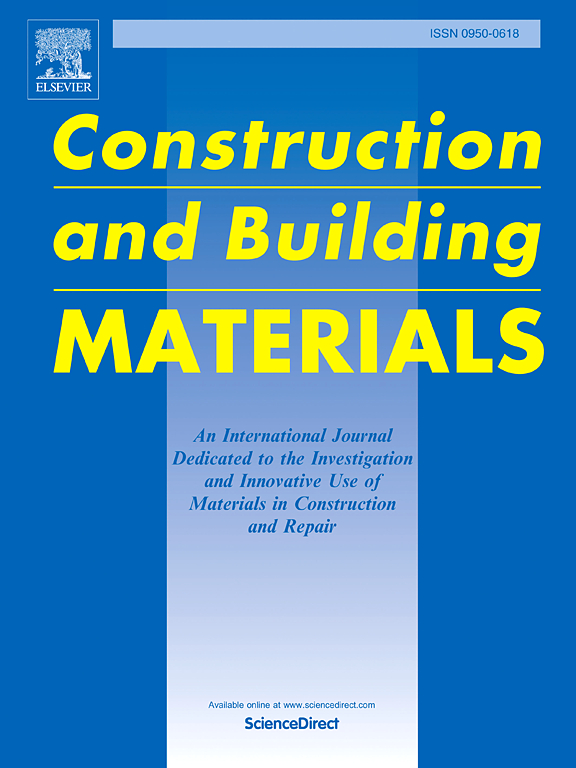Axial compressive behavior of aluminum alloy thin-walled tube confined concrete
IF 7.4
1区 工程技术
Q1 CONSTRUCTION & BUILDING TECHNOLOGY
引用次数: 0
Abstract
Aluminum alloy has been widely used in modern engineering structures due to its good corrosion resistance, light-weight, convenient processing, and recyclability. To avoid the local buckling of the aluminum alloy tubes under axial load, aluminum alloy thin-walled tubes are preferable for only providing confinement for the core concrete in composite structures. In this study, eighteen aluminum alloy thin-walled tube-concrete composite stubs were compressively tested. The failure phenomena, load-displacement/strain curves and compressive behavior of the stubs were investigated. The results show that the circular aluminum alloy thin-walled tube-confined concrete (ATCC) experienced shear failure. In the square stubs, due to stress concentration at the corners, the aluminum alloy tubes exhibited tearing at the corners. When the thickness of aluminum alloy thin-walled tube was increased from 2.5 mm to 3.5 mm, the ductility of square and circular stubs was improved by a maximum of 60.2 % and 106.5 %, respectively, and the corresponding axial stiffness was enhanced by a maximum of 21.4 % and 13.2 %, respectively. A parametric analysis is conducted by using a validated finite-element model. The numerical results indicate that when the concrete strength is increased from 40 to 80 MPa, the ultimate bearing capacity and axial compression stiffness of square (circular) stubs increased by 73.9 % (46.7 %) and 58.1 % (54.1 %), respectively. As the slenderness ratio of the square (circular) stubs increased from 10.39 (12.00) to 41.57 (48.00), the corresponding axial stiffness decreased by 73.9 % (46.7 %). The analysis for the confinement mechanism of aluminum alloy tubes on the concrete indicates the circular aluminum alloy tube provide better confinement than the square tubes. Finally, a uniaxial compressive constitutive model for the ATCC is proposed and validated. Based on the proposed design method for ATCC, a full-range prediction analysis of the mechanical behavior of ATCC stubs is conducted. The results show that for the circular stubs, larger strength of external aluminum alloy results in stronger confinement effect to core concrete. For the square stubs, the confinement effect of square aluminum alloy thin-walled tube on concrete is strongest when the strength of concrete and aluminum alloy tube is 40 MPa and 360 MPa respectively. As the D/t or B/t decreases, the confinement effect of the aluminum alloy tube on the concrete is enhanced.
求助全文
约1分钟内获得全文
求助全文
来源期刊

Construction and Building Materials
工程技术-材料科学:综合
CiteScore
13.80
自引率
21.60%
发文量
3632
审稿时长
82 days
期刊介绍:
Construction and Building Materials offers an international platform for sharing innovative and original research and development in the realm of construction and building materials, along with their practical applications in new projects and repair practices. The journal publishes a diverse array of pioneering research and application papers, detailing laboratory investigations and, to a limited extent, numerical analyses or reports on full-scale projects. Multi-part papers are discouraged.
Additionally, Construction and Building Materials features comprehensive case studies and insightful review articles that contribute to new insights in the field. Our focus is on papers related to construction materials, excluding those on structural engineering, geotechnics, and unbound highway layers. Covered materials and technologies encompass cement, concrete reinforcement, bricks and mortars, additives, corrosion technology, ceramics, timber, steel, polymers, glass fibers, recycled materials, bamboo, rammed earth, non-conventional building materials, bituminous materials, and applications in railway materials.
 求助内容:
求助内容: 应助结果提醒方式:
应助结果提醒方式:


